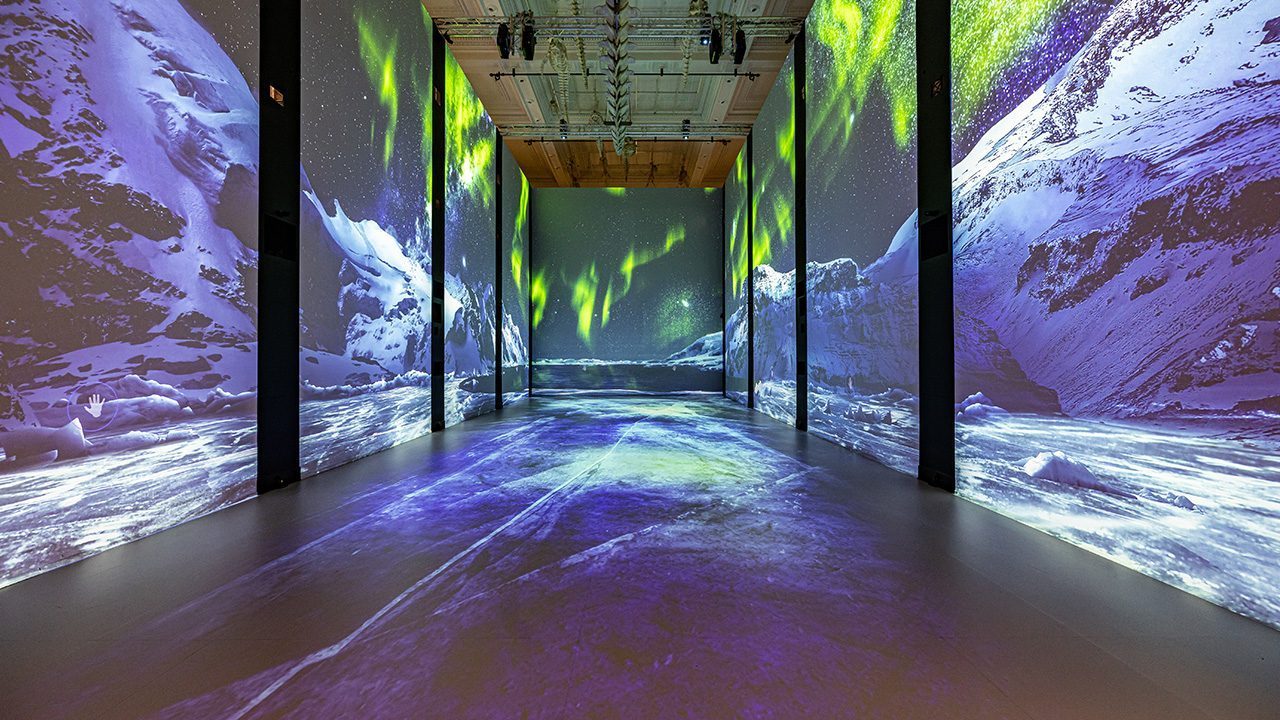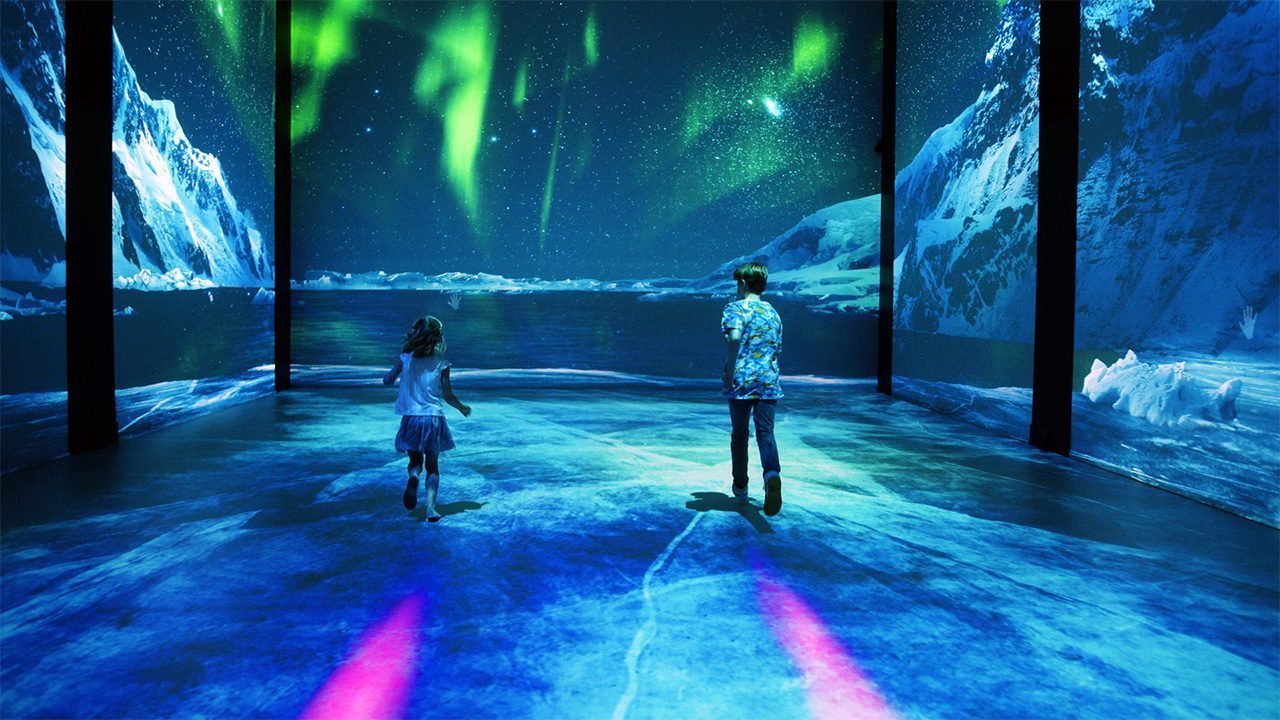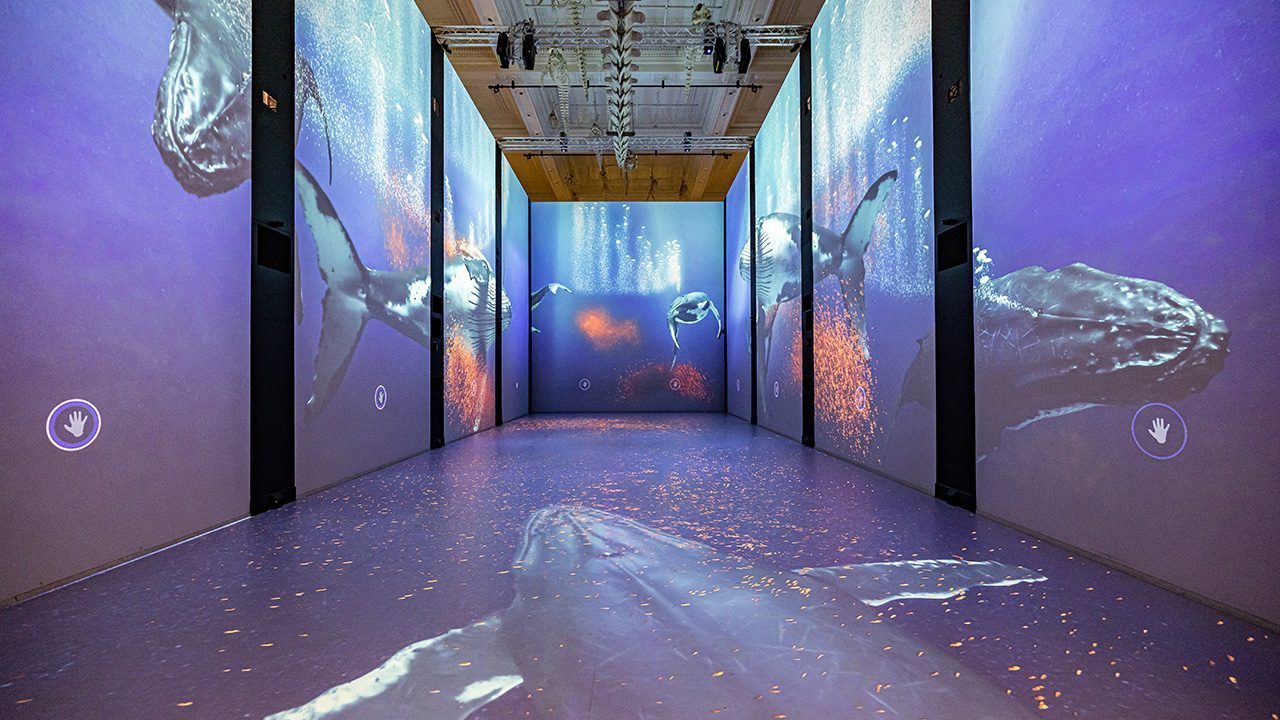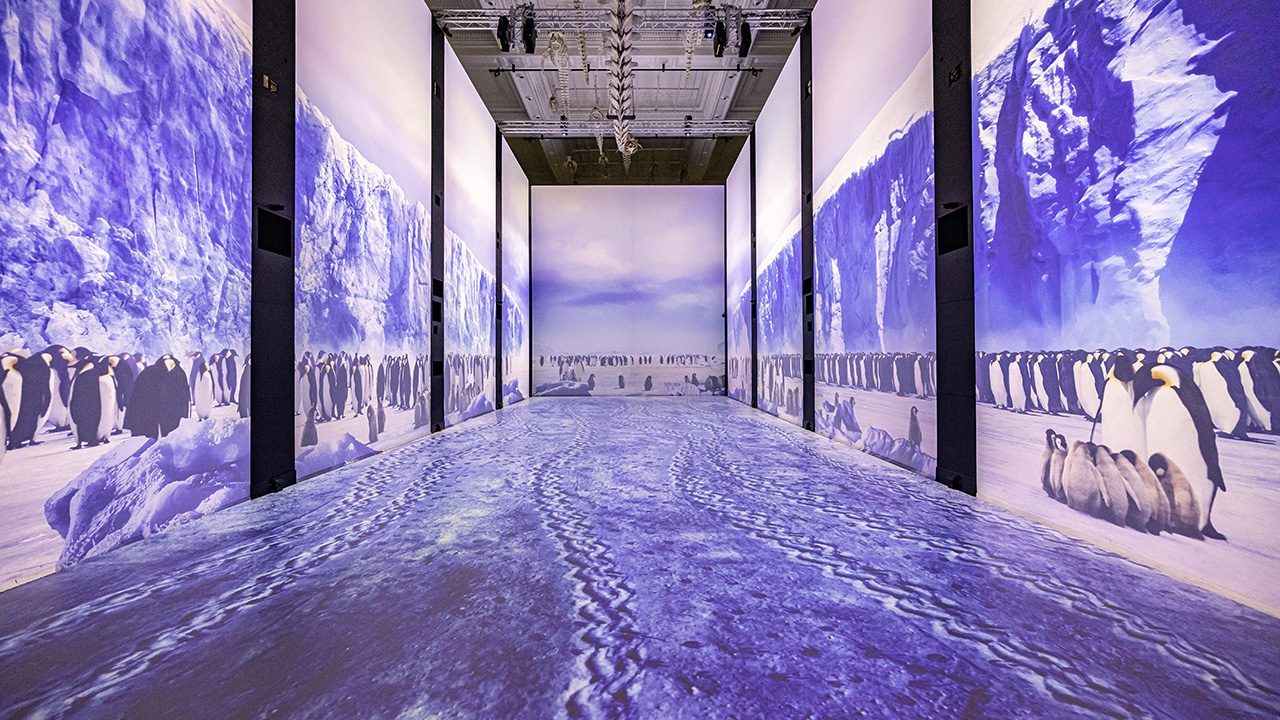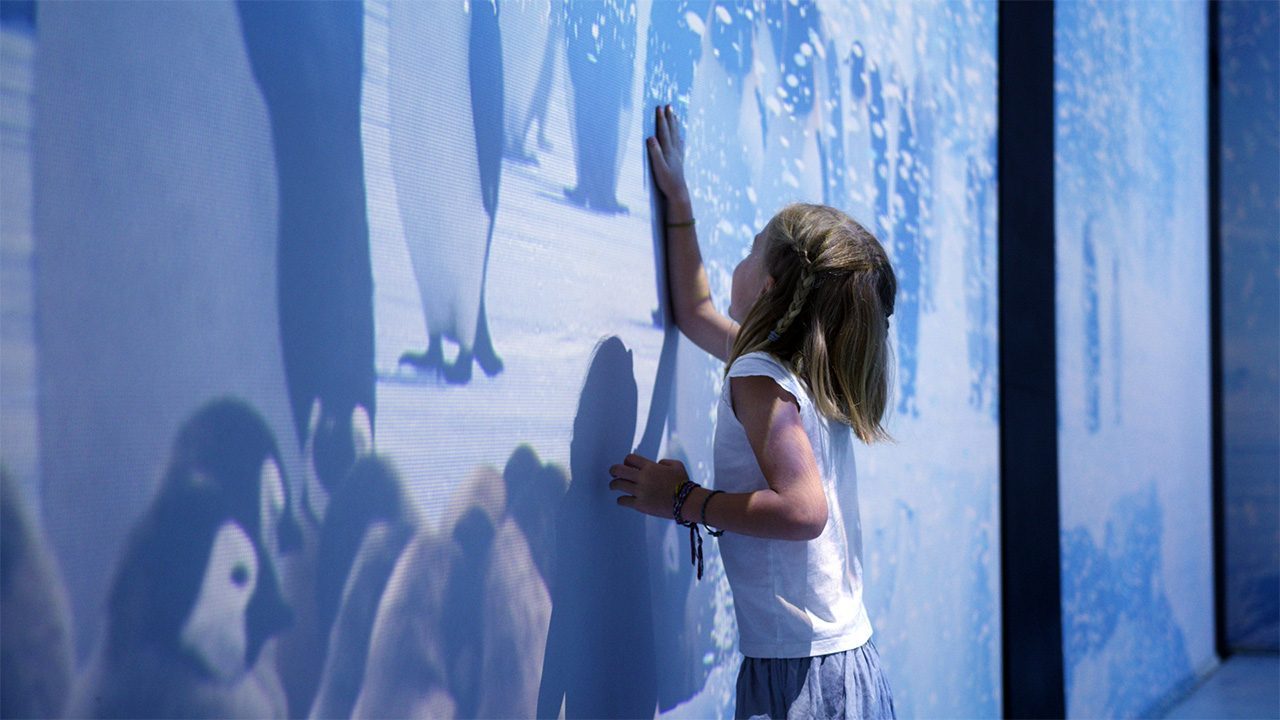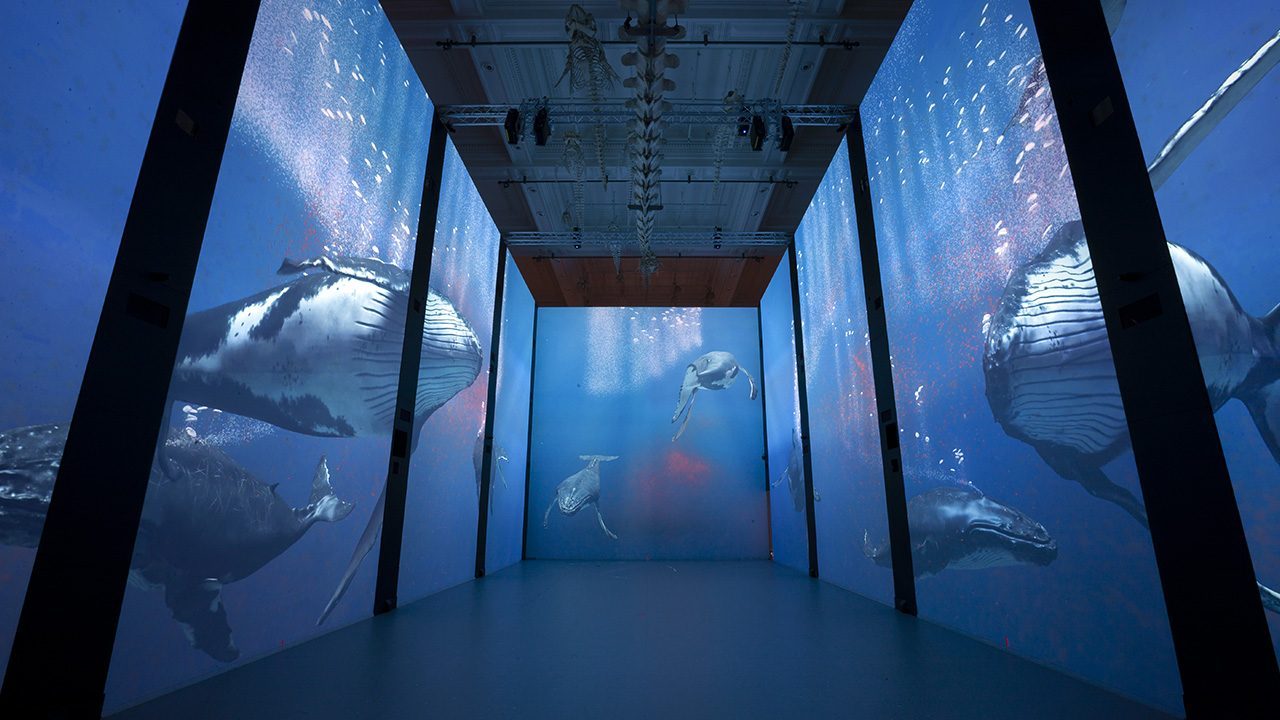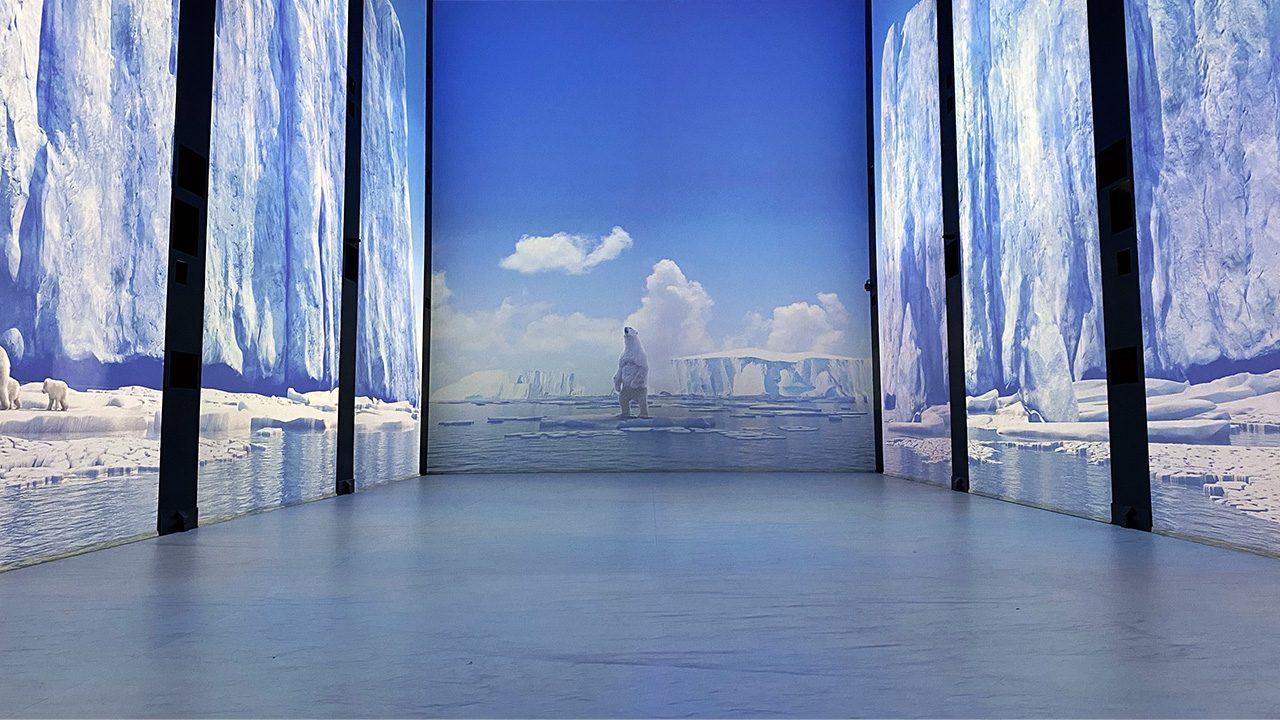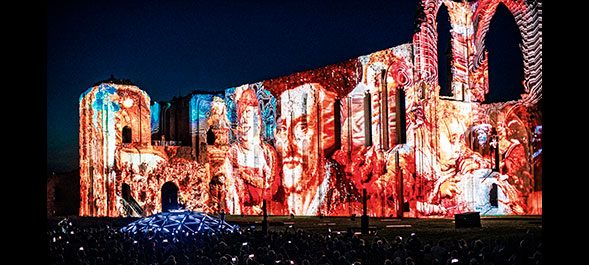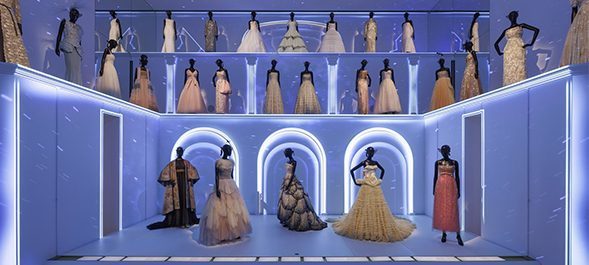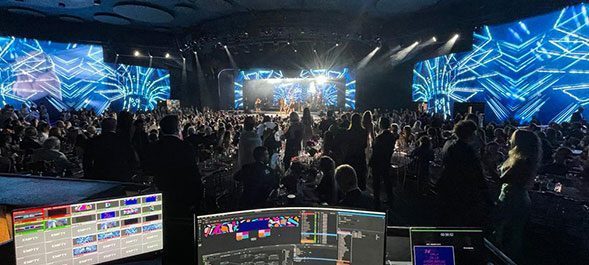Pictures: Dreamed by Us & the Oceanographic Museum of Monaco
Artistic direction, scenography, storytelling: Dreamed by Us
Video content: Ki Studios
Interactivity: Superbien
AV supplier: ID Scènes
Modulo Pi’s media servers at The Polar Mission exhibition in Monaco
Since June 4, 2022, the Oceanographic Museum of Monaco offers “The Polar Mission”, a two-year exhibition designed to reveal the magnificence of the Arctic and Antarctic worlds and raise awareness about their fragility. At the heart of the visitor journey, the “IMMERSION” room plunges the audience in the wild and grandiose beauty of the poles through an immersive and interactive setup. The system includes 34 x video-projectors powered and controlled by 6 x Modulo Player media servers by Modulo Pi.
Available at the Oceanographic Museum of Monaco, The Polar Mission exhibition embarks the audience on the poles and their wildlife. At the heart of the visit, the IMMERSION room offers an unprecedented immersive and interactive journey into the North and South poles.
Designed by Dreamed By Us, the experience propels visitors into 6 emblematic scenes of the poles, highlighting their grandiose beauty and fragility. Executed by Ki Studio, the post produced and 3D animated media content is projected onto the walls and the floor, reaching 650 sqm of video-projection.
AV supplier ID Scènes oversaw the technical installation for the IMMERSION room with 34 x Epson EB-L1075U video-projectors installed, powered by 6 x Modulo Player media servers by Modulo Pi. The media servers are handling soft edge blending, mapping, as well as audio and media playback.
Furthermore, visitors are empowered to interact with the exhibition through 2D LiDAR sensors communicating with a dedicated software. Executed by the creative studio Superbien, interactivity and real-time content rely on 11 x LiDARs in total, 6 being used for the floor and 5 for the walls.
The generative and interactive content was created using Unreal Engine and is supported by 10 x dedicated servers. All Unreal feeds are then captured in the Modulo Player media servers equipped with low latency 4K HDMI live input boards.
When visitors’ movements are detected by the LiDARs, part of the media – background animations, HAP Alpha overlay videos, and superimposed informative data – are automatically triggered and played by Modulo Player.
To make these media appear where visitors’ movements are detected, teams of ID Scènes implemented a bi-directional communication system between Modulo Player and the LiDAR sensors in OSC. Thanks to Modulo Player’s Digimap function, the media properties – their position on the projection area in this case – are adjusted real-time based on the LiDAR data.
The exhibition can also host private events. In such configuration, clients can select the scene of their choice through a panel available on a tablet. The custom control panel was created in Modulo Player using the UI Designer menu, through simple drag and drops.

